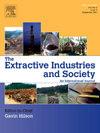Do natural resources determine Chinese education aid? A subnational analysis of Chinese aid to Africa
IF 3.6
2区 社会学
Q2 ENVIRONMENTAL STUDIES
Extractive Industries and Society-An International Journal
Pub Date : 2025-03-22
DOI:10.1016/j.exis.2025.101648
引用次数: 0
Abstract
Since launching the Forum of China-Africa Cooperation in 2000, China has become Africa's top trading partner and the continent has obtained the largest share of Chinese development aid, including education projects. However, many attribute Chinese aid chiefly to natural resource extraction, oversimplifying the multifaceted nature of Africa-China ties. This study investigates whether and how Africa's natural resources influence Chinese aid allocations, adopting an instrumental variable design relying on the availability of the geospatial and disaggregated information of Chinese projects, oil and gas fields, and mines for 19 African countries. We find that natural resource endowment does not significantly raise the exposure and scale of Chinese education aid commitments in subnational areas. However, our results demonstrate that existing education capacity vis-à-vis the years of schooling and other localized factors like geographic size, population density, capital city, malaria incidence, and prior World Bank aid raise the likelihood of receiving Chinese aid, while higher migration rates significantly decrease it. We argue that China's focus on education development and strategic investments in human capital across Africa may explain these patterns, though a selection bias persists, with aid overlooking remote and impoverished areas, attributable to political considerations on the part of China and beneficiary governments.
求助全文
约1分钟内获得全文
求助全文
来源期刊

Extractive Industries and Society-An International Journal
ENVIRONMENTAL STUDIES-
CiteScore
6.60
自引率
19.40%
发文量
135
 求助内容:
求助内容: 应助结果提醒方式:
应助结果提醒方式:


